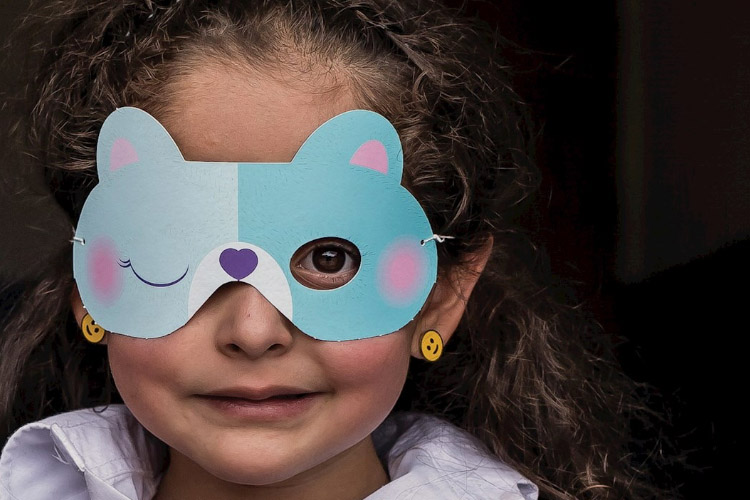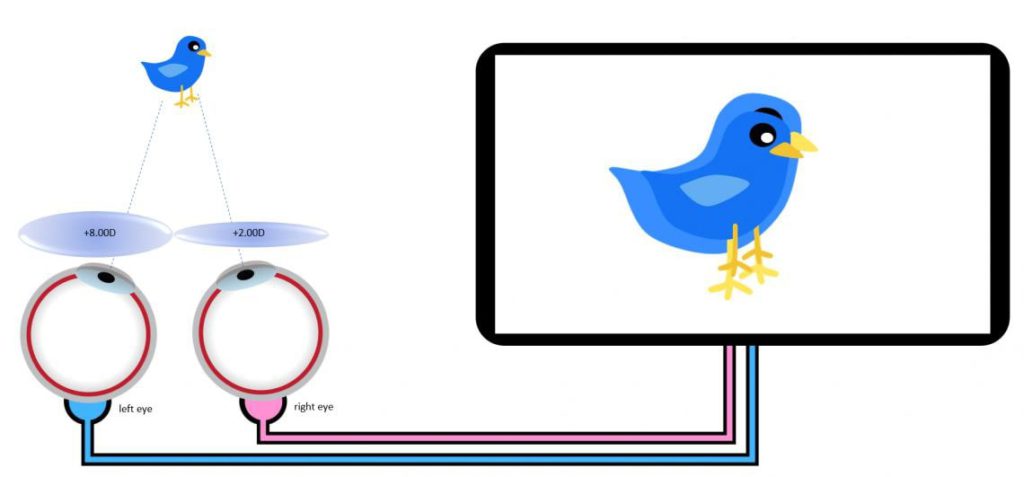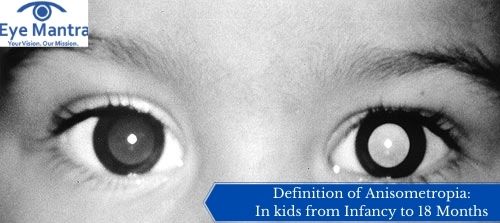Anisometropia – An Unequal Refractive Power
Human beings are born with
eyes that have different optical power. In cases with the exception, the optical power of the eyes are the same.
Anisometropia is basically a condition wherein two eyes have unequal refractive power. That is, one can be
myopic (near-sightedness) and the other can be
hyperopic (
farsightedness), or one
eye can have a stronger vision than the other.
It can be seen as a major concern in newborn and young babies. In this condition, the eyes can’t differentiate image coming from two eyes. The image coming from one eye gets preference from birth and the image formed by another eye gets suppressed. Sometimes, it results in a way that vision gets blurred.
Anisometropia is derived from the Greek language, and its meaning can be derived when you break the word into small and simple parts-
“An” means “not”; “iso” means “equal”; “meter” means “to measure”; and “opia” mean “vision”. The word collectively means the refractive power of the two eyes are not equal, and the opposite of this is “isometropia” which means the refractive power of both the eyes are equal.
How to know if my child has Anisometropia?
When your child will start facing a cross or wandering eye, then only you will get to know about the problems, otherwise, there will not be any indications.
The problem arises when children usually don’t identify that they are able to see with only one eye and don’t notice that the vision of one eye is not developing as per the other. It can only be determined when they will visit an
ophthalmologist for a
regular eye checkup.
Causes Of Anisometropia
According to research, we can’t find a definite cause for anisometropia but having an eye of different refractive power can be a major factor for anisometropia. Usually, we see that there is a difference of 5% in refractive errors of both the eyes, but if the percentage increases then it’s more likely a chance to develop anisometropia in your eye.
In anisometropia, you will find out that you will see larger images from one eye and smaller images from the other and this results that one eye becomes weaker than the other, and the brain responds to the images formed by an eye which produces a clear image.
Anisometropia can also lead you to experience –poor depth perception, dizziness, headaches and visual discomfort.
Types of Anisometropia
In the majority, there are three types of anisometropia –
Simple Anisometropia
In this, you will find out only one refractive error. Either of your eyes would be hyperopic (farsighted) or myopic (nearsighted). But this form of anisometropia can be treated easily through prescribed
eyeglasses by an
ophthalmologist.
Compound Anisometropia
In this, you will find out that when both your eyes have a disorder of either hyperopic (farsightedness) or myopic (near-sightedness). As there’s a difference in the refractive errors in both eyes, so they would need a different prescription. In this type of anisometropia, both eyes will form blurry images and one eye will form an image significantly more blurry.
Mixed Anisometropia
In this, you would notice that both eyes have refractive errors but one will be myopic (near-sighted) and the other will be hyperopic (far-sighted)
Symptoms or Indicators of Anisometropia
Some of the symptoms include :
Amblyopia
Amblyopia also called a “lazy eye” is the condition where the brain starts to form images only from one eye and the vision from the other eye gets weak. And gradually, the brain starts to ignore visuals from the weaker eye.
In other words, it’s also called a ‘crossed eye’. In this, you are not able to keep your eyes aligned. The absence of coordination doesn’t allow eyes to focus on an object at the same point in time.
Diplopia
This brain starts to develop ‘
double vision’, wherein the brain gets to capture double images that result in double vision and creates confusion. It can further cause eyestrain, headaches, nausea, sensitivity to light. In the starting phase, you would find out that the image found by one is blurrier than the other.
The patient may notice that the image formed by the one is smaller than the other which sometimes also results in double vision. In some cases, anisometropia is present from the birth of the child. It’s the responsibility of parents/guardians should keep notice of the movement of the eye of a child, developing gradually frequent headaches and if they’re complaining of
blurry vision.
Every kid should visit an ophthalmologist for an
eye exam to identify the symptoms at the starting phase.
Illustration
Every human being has a difference in refractive power of 5% in each eye. However, if the difference increases from 5% then it will experience uneven vision.
If the magnification between the two eyes is uneven, then it becomes tough for the individual to fuse the image from both eyes and then combine it into one.
For your better understanding, here’s an example-
Here is an illustration of anisometropia, in which the left eye can produce an image with +8.00 D and the right eye is producing an image with +2.00 D. If we calculate applying the mathematics of optics we will found out that the magnification produced by the left eye is 14% and right eye is just producing an image with 3.5% magnification.
Result
The image on the screen is the image that the brain will form. In this, you will find that the image formed by the brain has double vision.
Reason
The magnification difference between the two eyes is big in number, that’s the reason the brain is not able to form a proper image. The image formed by one eye is larger than the other.
The brain can only tolerate the mismatch of 6% which is equal to 3 (D) Dioptre, if it gets exceeded the brain will start forming double visuals, or blurry images.
Treatment For Anisometropia
The anisometropia can be treated initially by correcting the refractive difference between the eyes. An ophthalmologist would prescribe pair of lenses to correct the difference and ask the patient to come back after one or two months of evaluation.
But the severe cases of anisometropia cannot be treated by
eyeglasses. And, this is due to the optical principle called “aniseikonia”. It can only be treated by using corrective surgery in which to equalize the magnification the lens is placed directly on the eye. At a very young age,
contact lenses are prescribed to the babies to reduce the risk of amblyopia (lazy eyes).






